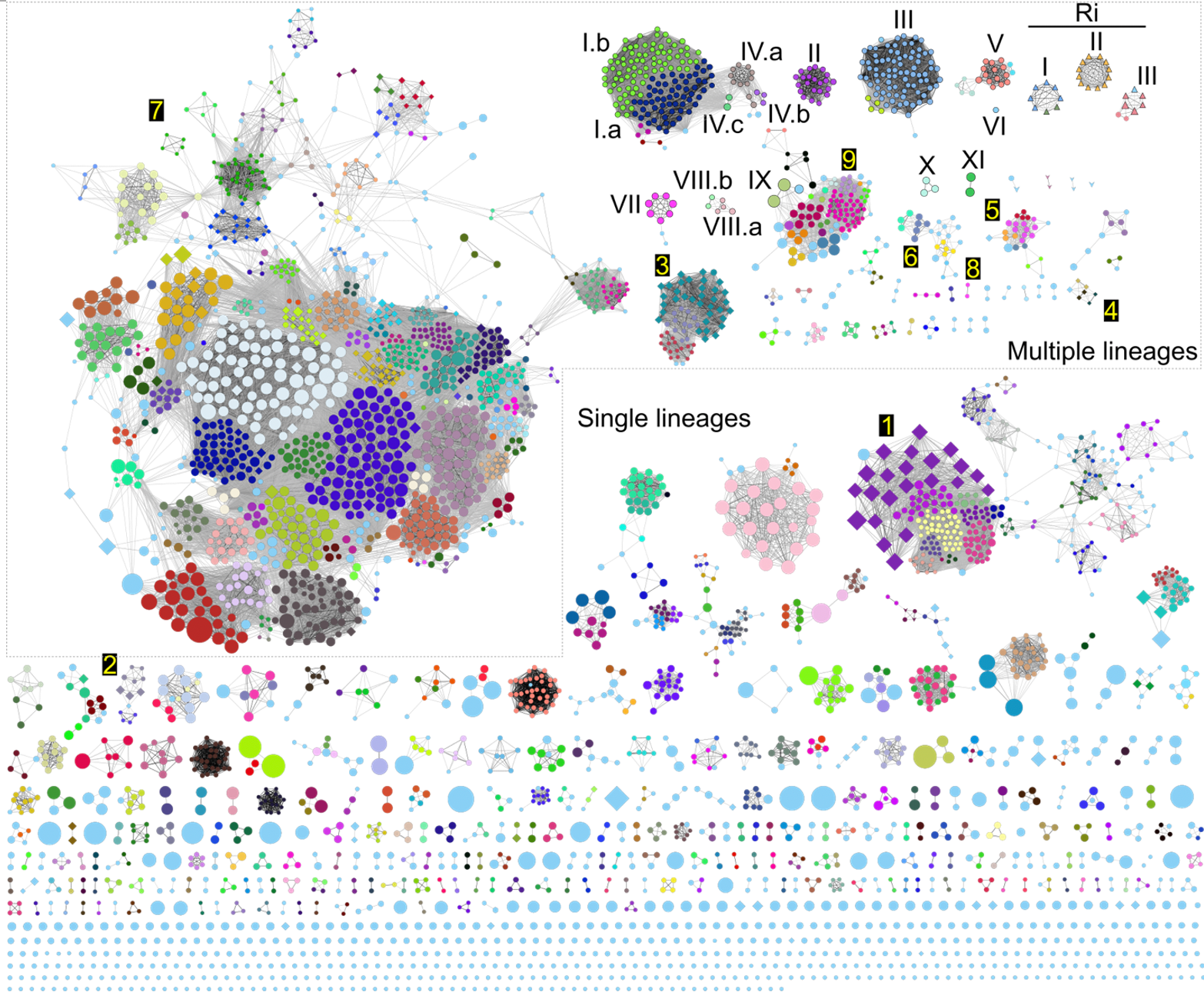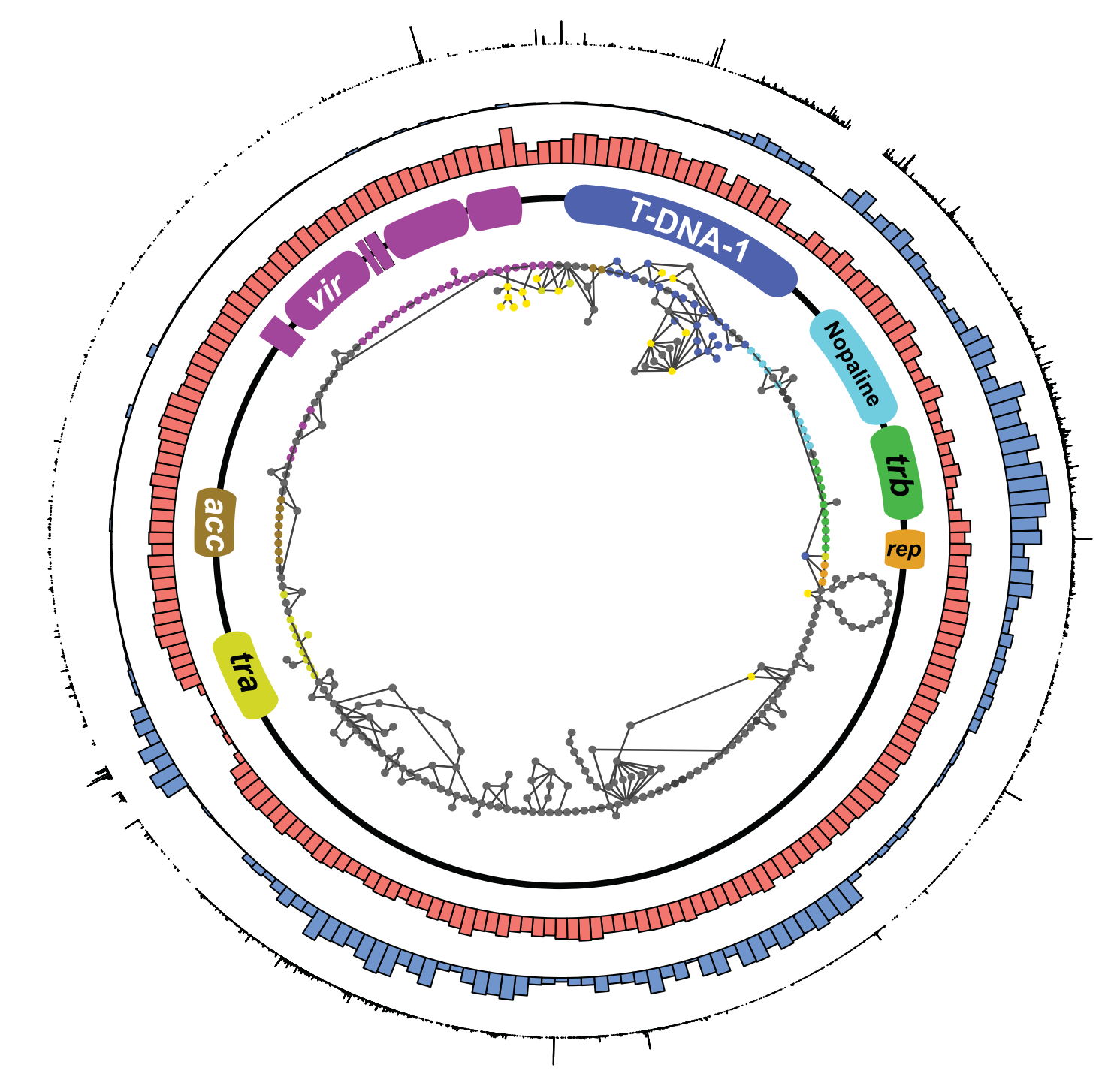Determinants of host range and MGE compatibility
Microbial pathogens (and mutualist symbionts) often have a restricted range of host species on which they can cause disease (or provide beneficial services). Some pathogens have a wide host range, while others are more restricted to one or few host species. The genes conferring this phenotype may be present on the chromosome or on mobile genetic elements, or both.
 Diversity of plasmids in the agrobacteria/rhizobia complex
Diversity of plasmids in the agrobacteria/rhizobia complex
Mobile genetic elements may also be restricted to specific taxonomic groups or lineages of microbes in which they can persist. What restricts the host range of a MGE?
Relevant publications
Weisberg, AJ, Kramer CG, Kotha RR, Luthria DL, Chang JH, and Clarke CR. “A novel species-level group of Streptomyces exhibits variation in phytopathogenicity despite conservation of virulence loci.” Molecular Plant-Microbe Interactions 34, no. 1 (January 1, 2021): 39–48. https://doi.org/10/gmwnv6.
Weisberg AJ, Miller M, Ream W, Grünwald N, and Chang JH. “Diversification of plasmids in a genus of pathogenic and nitrogen-fixing bacteria.” Philosophical Transactions of the Royal Society B 377:1842 (2021) p20200466 https://doi.org/10.1098/rstb.2020.0466
